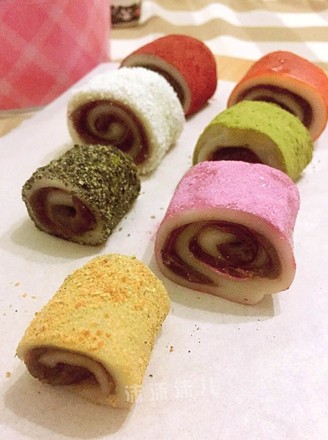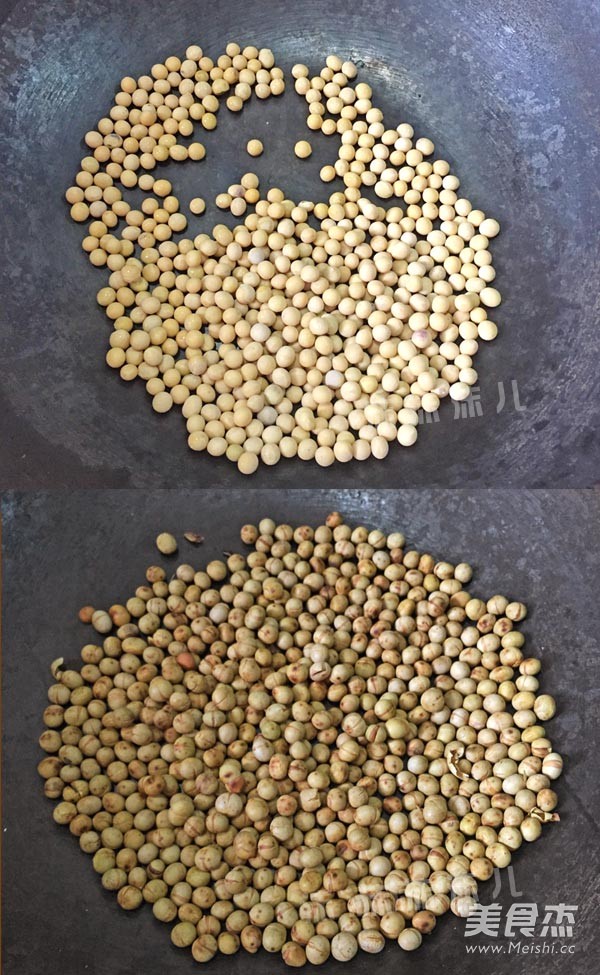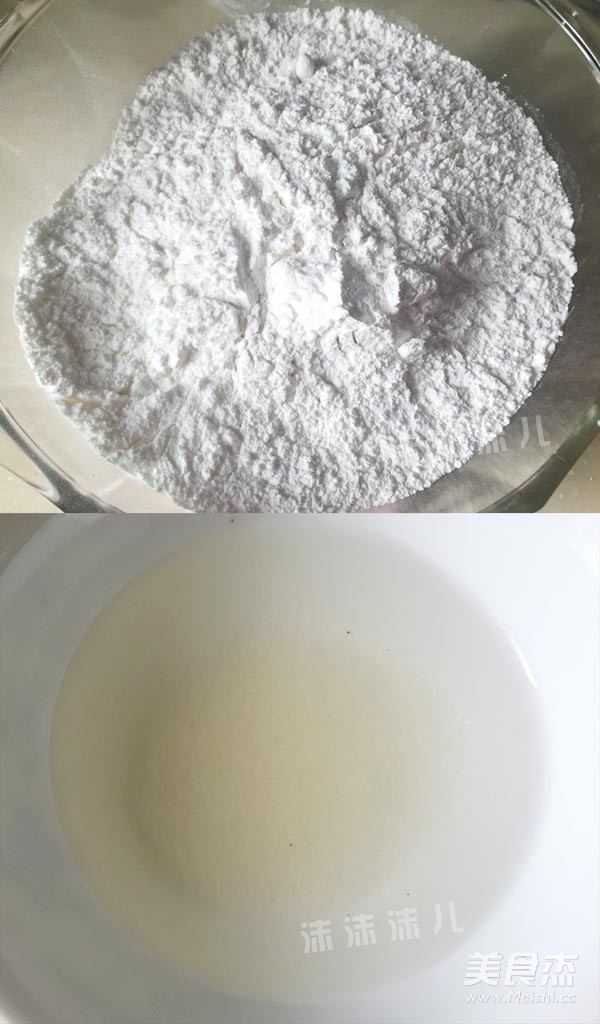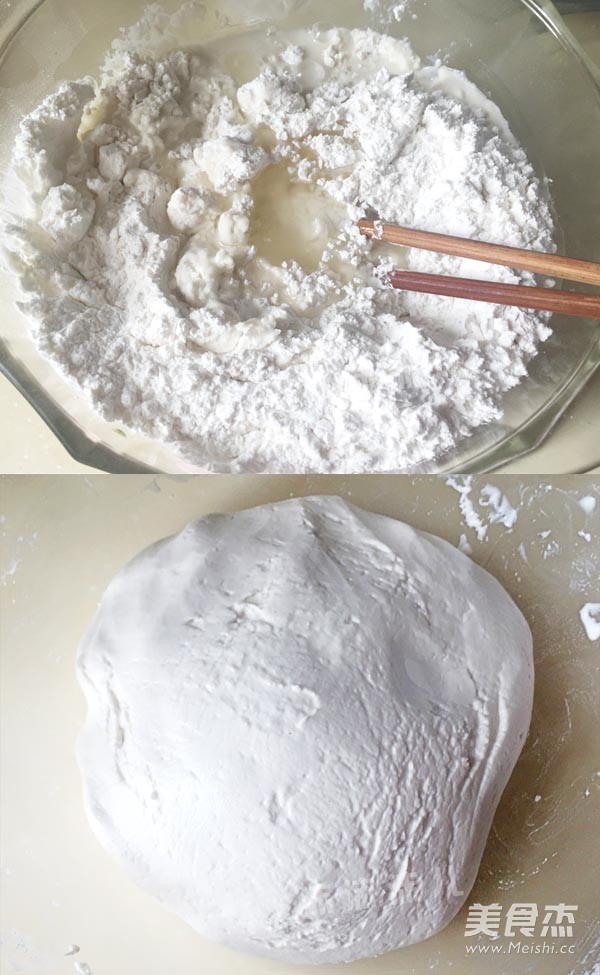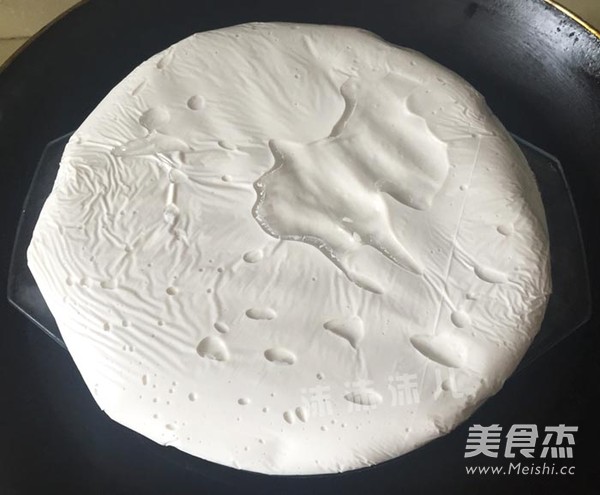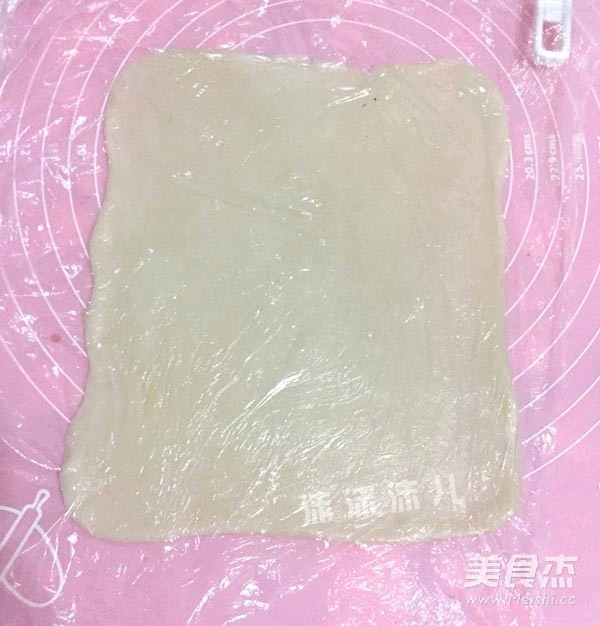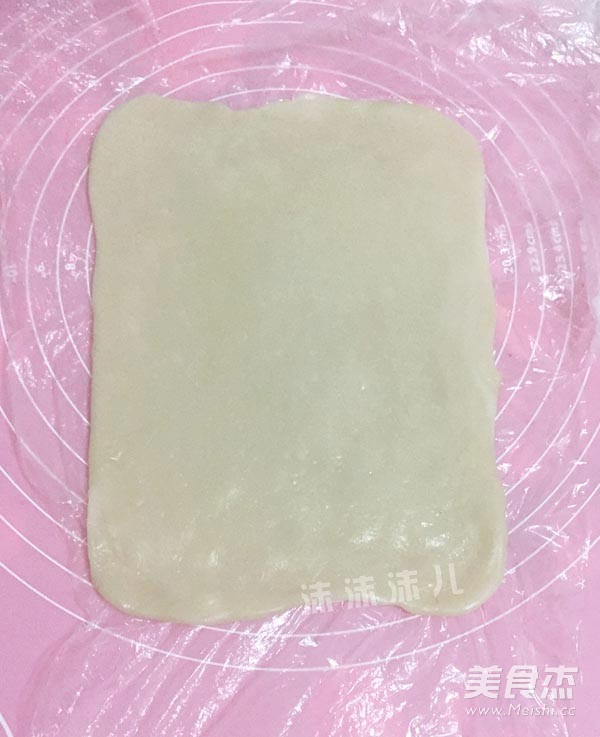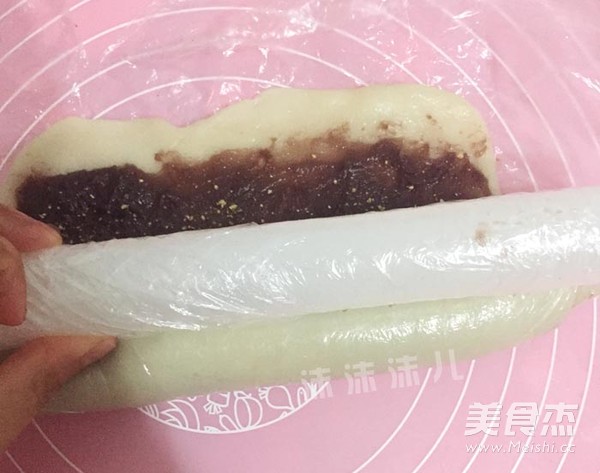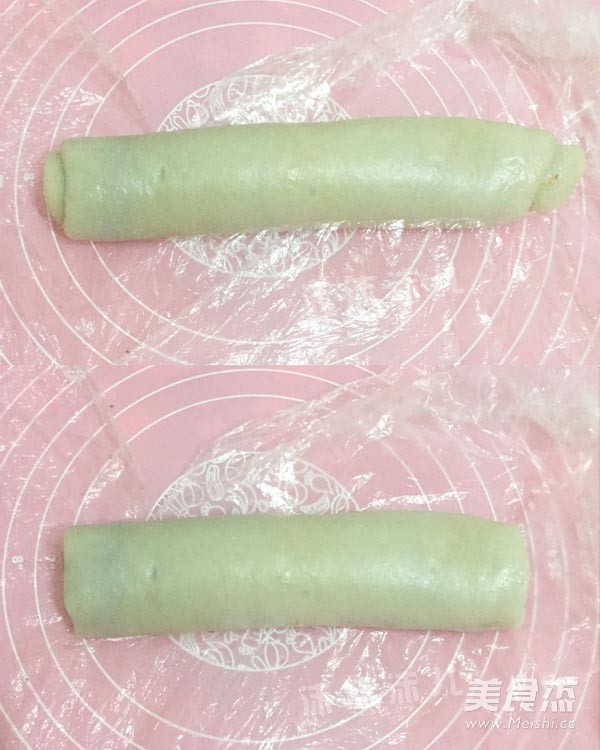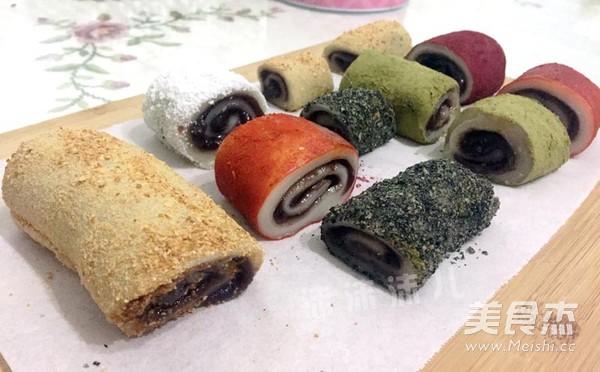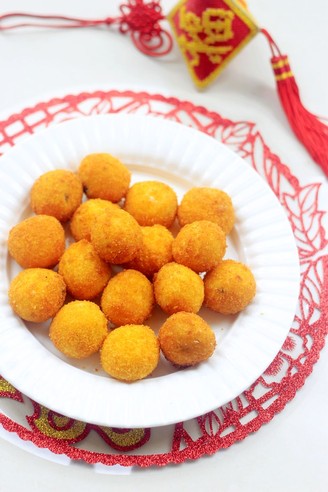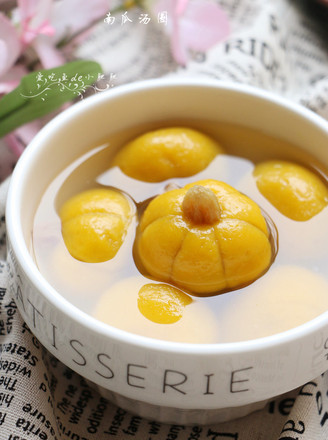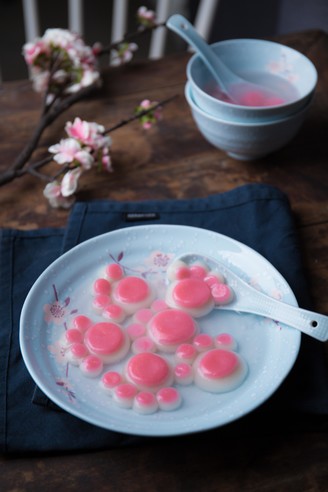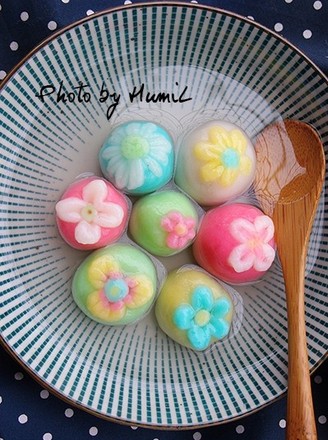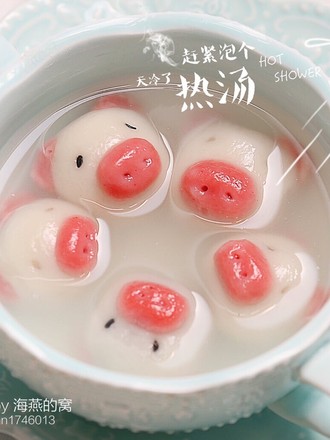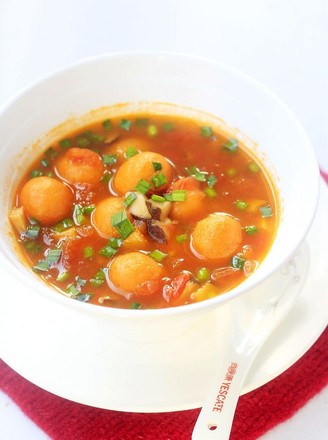Seven-color Donkey Rolling
1.
Let's make the soybean noodles first. There is no water and no oil in the pot, and stir fry the soybeans over low heat. Fry until the light yellow soybeans become even light brown.
2.
The fried soybeans are ground into soybean noodles in a grinder.
3.
Then make glutinous rice crust. Put 300g glutinous rice flour and 20g corn starch in a large bowl. Take another small bowl, put 20g sugar and 60g water, turn it in the microwave for 1 minute, take it out and stir to make it melt into sugar water.
4.
Pour the sugar water and 20g of oil into a bowl of glutinous rice flour, and add the remaining water in portions to form a softer glutinous rice flour mass. (The specific amount of water added depends on the state of the dough)
5.
Spread the glutinous rice noodles flat on a plate and wrap them in plastic wrap. Steam in a pot on high heat for 20 minutes. (It's easier to cook when it's spread and steamed)
6.
The steamed glutinous rice ball is very sticky, and it will be much better after letting it cool. Divide the cold glutinous rice dough into three parts.
7.
Take one of them and place it on the chopping board and cover it with a layer of plastic wrap. (I use a fresh-keeping bag to tear open, which is a little harder than the fresh-keeping film, which is easier to handle)
8.
Use a rolling pin to roll the dough into a rectangular shape.
9.
Pick up the plastic wrap and the dough sheet, turn them over and place them.
10.
Spread a layer of red bean paste evenly on the glutinous rice noodles, leaving a white edge at the end. And sprinkle a layer of soybean noodles. (Soy bean noodles are sprinkled here just to enhance the fragrance)
11.
Place the rolling pin under the plastic wrap and roll it outwards so that you can push the dough in the opposite direction and roll it inward. When you roll it up, you need to work harder and tighten it up.
12.
The rolled glutinous rice noodles are cut off at both ends to form regular cylinders.
13.
Sprinkle the soy noodles on the chopping board, roll the noodles on top to coat the soy noodles evenly, then cut into small pieces, and serve.
14.
What else is wrapped around is up to you to play.
15.
Dazzled.

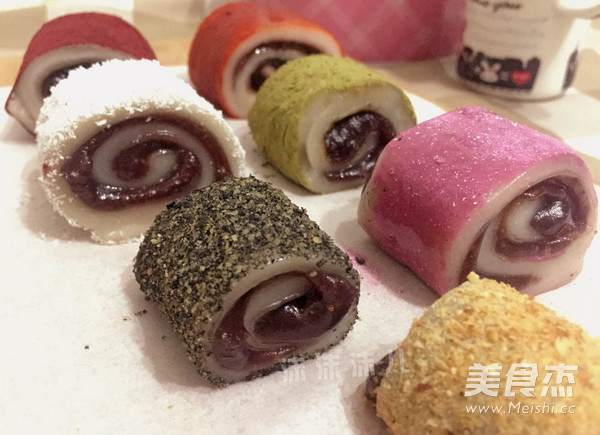
Tips:
1. Stir-frying soybeans is dry-frying. You must be diligent and stir-fry all the time. Don't fry them.
2. The soy beans can only be made into soy flour with a food processor grinder. The pounding mortar and rolling pin can't make it so thin...If not, just make other flavors. Or just buy ready-made soybean noodles.
3. When kneading any flour into a dough, the amount of water that needs to be added depends on the condition of the dough, so the amount of water is only a reference, not a fixed one. It is recommended to reserve 20% of the amount when adding water. Knead while adding it, so don't add any more water if it can form a dough.
4. The silicone pad does not stick, so when I rolled it, I did not sprinkle soybean noodles or oil or put a layer of plastic wrap on it. It depends on the material of your chopping board to determine whether the following anti-sticking is required. If the lower layer is lined with plastic wrap (I find it inconvenient to roll it out like that), you don't have to turn it over after you roll it out.
5. When applying bean paste, leave a side at the end and don't apply it, otherwise it won't stick when rolled.
6. Soybean noodles are sprinkled on the bean paste just to have the aroma of the soybean noodles inside and outside, so it can be omitted.
7. When rolling, use force and tighten. Otherwise, there will be gaps in the cut.

